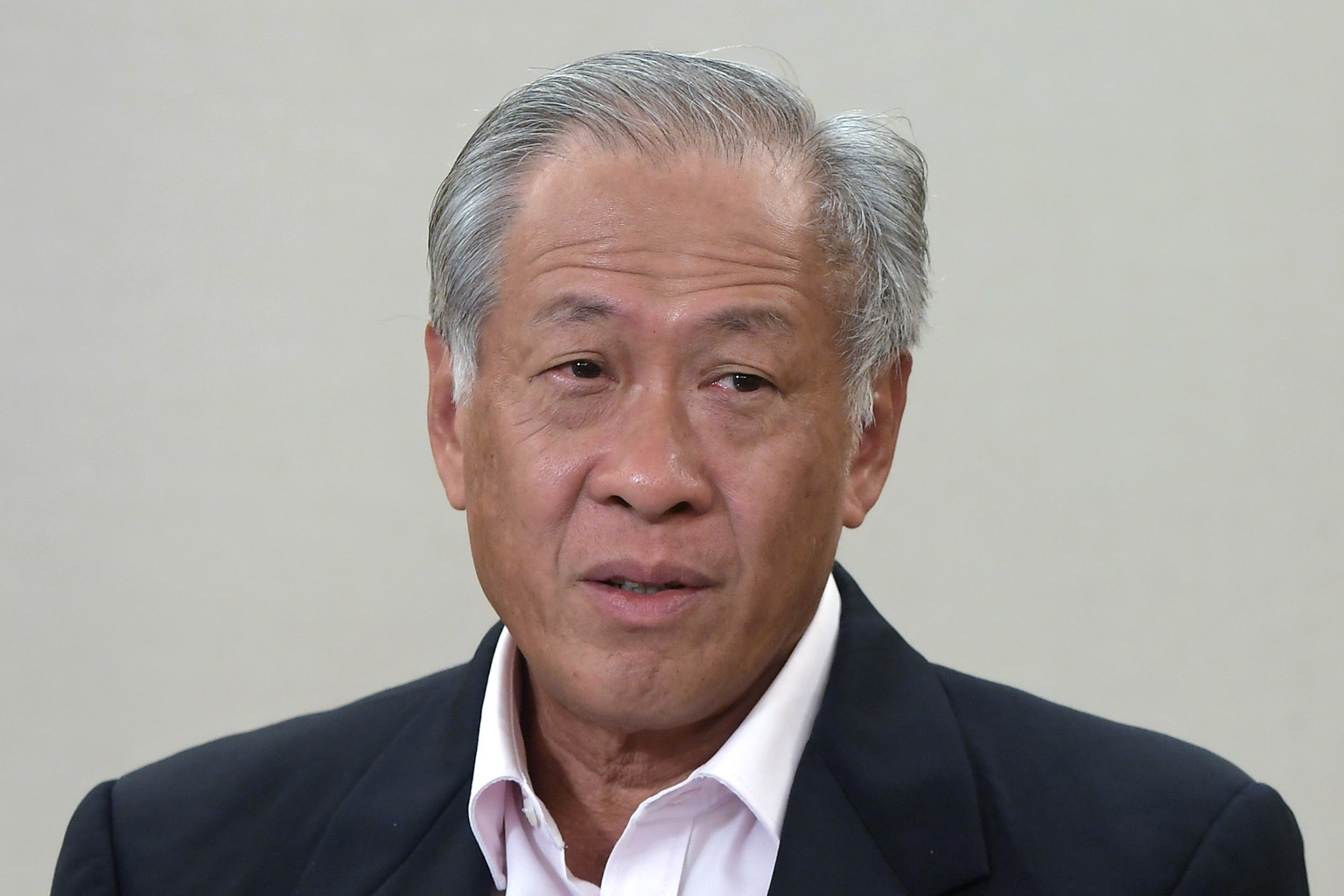Decision on F-16 replacement 'likely in next few months'
Exercise to replace ageing fleet of fighter jets projected to start from 2030: Ng Eng Hen
Sign up now: Get ST's newsletters delivered to your inbox

DEFENCE MINISTER NG ENG HEN.
Kor Kian Beng
Follow topic:
Singapore will decide "likely in the next few months" on a new fighter jet type to take over the baton from its ageing fleet of F-16s, with the replacement exercise projected to start from 2030, said Defence Minister Ng Eng Hen.
Speaking to the media ahead of the SAF Day today, he said the F-16 replacement is part of a long-term effort in equipping a next-generation Singapore Armed Forces (SAF) to sharpen its lethal edge while coping with manpower and land constraints. There is a need to replace the jets, which are now 30 years old, as they are set to become obsolete globally beyond 2030, said Dr Ng.
He added that a decision has to be made soon as the replacement requires a lead time of eight to 10 years for preparations in areas such as aircraft maintenance and the training of pilots for the new fighter jets.
"So we have thought long and hard about it, taken our time to choose a replacement and we'll be making a definitive decision likely in the next few months," said Dr Ng.
The options for the 4.5 or fifth-generation stealth fighters in the market include the Eurofighter Typhoon, US Lockheed Martin's F-35 Joint Strike Fighter, Russian-made Sukhois, and the Chinese-made J-20, though Singapore has reportedly been evaluating the F-35 as a replacement.
Dr Ng cited the factors at play in choosing a new fighter jet, which include whether it is the best option in defending Singapore; whether it can work with other platforms across the SAF, and whether it is easy to maintain.
Another factor is the risk of concentration failures, where the discovery of a serious problem could lead to an entire fleet being grounded till a solution is found.
Besides acquiring new aircraft and missile systems, the Republic of Singapore Air Force (RSAF) is also setting up a new facility called the Air Warfare Centre at the Paya Lebar Air Base this month.
It will centralise various entities that will test and validate different air warfare concepts and capabilities in a controlled environment without the need for physical space.
Taken together, these efforts will help the RSAF to maintain air superiority, which is crucial for a small state like Singapore as it creates the time and space for early warning against any aggressors, said Dr Ng.
During the interview, the minister also outlined other timeframes for equipment upgrades and purchases in the army and navy, as well as steps to leverage technology more to build a next-generation SAF that is smarter, leaner and more lethal.
These efforts will help the SAF to continue to do more with less as the security challenges are set to become more complex while it also will have to grapple with a one-third reduction in manpower resources amid the country's declining birth rates, said Dr Ng. He added that the SAF is confident of coping with the manpower crunch.
For instance, the Next-Gen Howitzer high-mobility weapon system, which can shoot and scoot faster compared to the Singapore Self-Propelled Howitzer Primus, is envisaged to be introduced from 2020 and help build a next-generation army that is "faster, heavier, more deadly, and has greater firepower".
The Multi-Role Combat Vessel, which can function as the "mothership" for unmanned systems and be configured for different types of missions, will replace the Victory-class Missile Corvettes that are reaching the end of their operational lifespan in 2025.
Dr Ng said these asset upgrades and purchases have been factored into defence spending for the next decade, which will keep pace with inflation each year and is unlikely to see a spike, barring unexpected scenarios.
He said these moves are being made to build an SAF capable of protecting another generation, just like how the previous generations had done for the current one.
He cited how long-term planning over the years to build an SAF capable of meeting a myriad of potential future challenges allowed it to deploy various assets for the June 12 summit on Sentosa between United States President Donald Trump and North Korean leader Kim Jong Un.
"We succeeded because each last generation took great pains and steadily built up the SAF, and this is what this generation must do," he added.

